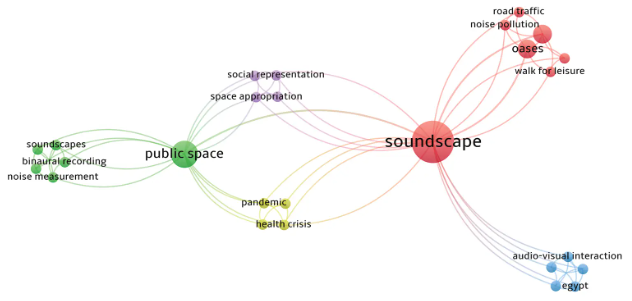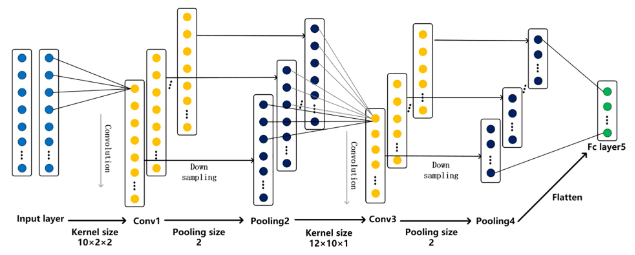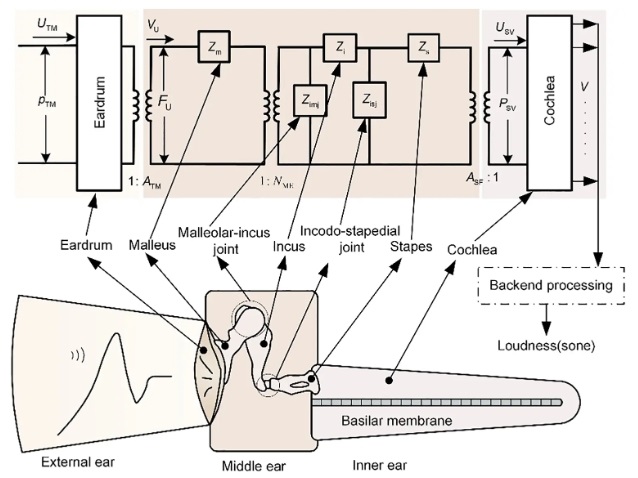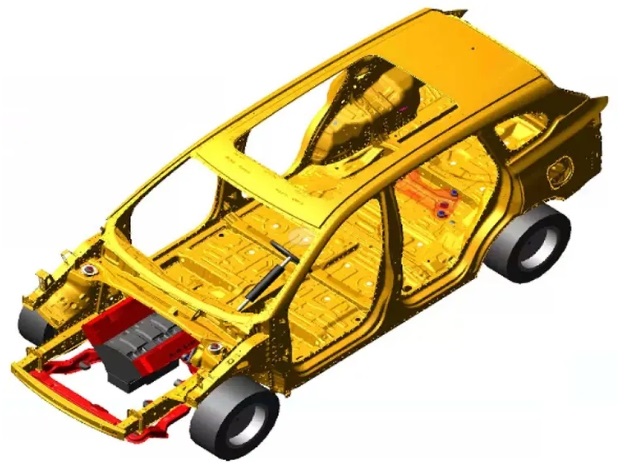Research on intelligent vibration damping base of washing machine based on a stiffness-variable magnetorheological elastomer
Abstract
Traditional washing machine vibration-damping bases have a fixed stiffness, which can lead to structural resonance when the motor’s excitation frequency aligns with the machine’s inherent vibration frequency during the washing and spinning processes. This not only amplifies the noise caused by vibrations but also accelerates the wear and tear of the internal components. In this study, a pioneering approach has been introduced, developing an intelligent vibration-damping base for drum washing machines based on the dynamics of a mass-spring-damped single-degree-of-freedom system. This innovative base is designed with variable stiffness magnetorheological elastomer, utilizing the dynamics of the mass-spring-damped system to adaptively counteract vibrations. A vibration transmission rate curve specific to drum washing machines has been derived, and an intelligent control strategy for the drum washing machine’s vibration-damping base has been proposed. Dynamic testing of the drum washing machine’s vibration-damping base was conducted to verify the effectiveness of the intelligent damping base. The intelligent damping base addresses the unavoidable low-frequency resonance issues of traditional passive damping bases in washing machines and overcomes the drawback that the performance parameters of traditional passive isolation structures cannot be changed once set, providing a new direction for the damping of household appliances.
References
[1]Shen Di. (2020). Development and application of energy dissipation and vibration damping technology. Sichuan Building Materials, 46(02),76-77. https://doi.org/10. 3969 /j. issn. 1672-4011. 2020. 02. 038
[2]HE Honglin, ZHOU Nanlan, LIU Wenguang, & YUAN Weidong. (2015) .Analysis of Vibration Suppression Characteristics of Plank Structure Layered by Visco-Elastic Damping Materials. Computer Simulation,32(07),203-207.
[3]Amer, Y.A., Bahnasy, T.A. (2021). Duffing oscillator’s vibration control under resonance with a negative velocity feedback control and time delay. Sound & Vibration, 55(3), 191-201. https://doi.org/10.32604/sv.2021.014358
[4]Wagg, D., & Neild, S. (2010). Nonlinear vibration with control: for flexible and adaptive structures. Dordrecht: Springer Netherlands.
[5]Zhou, X. Q., Yu, D. Y., Shao, X. Y., Zhang, S. Q., & Wang, S. (2016). Research and applications of viscoelastic vibration damping materials: A review. Composite Structures,136,460-480. https://doi.org/10.1016/j.compstruct.2015.10.014
[6]Guo T. (2021). Comparative Study of Viscoelastic Damping Layer and Dynamic Vibration Absorption Technology. Equipment Environmental Engineering, 18(02),90-94. https://doi.org/10.7643/ issn.1672-9242.2021.02.016
[7]LI Zhuangzhuang, SHEN Yongjun, YANG Shaopu, TANG Jianhua, & XING Hangjun. (2018). Study on vibration mitigation based on inertia-spring-damping structure.Journal of Vibration Engineering, 31(06),1061-1067.https://doi.org/ 10.16385/j.cnki.issn.1004-4523.2018.06.017
[8]Olszak, A., Osowski, K., Kesy, Z., & Kesy, A. (2019). Investigation of hydrodynamic clutch with a magnetorheological fluid.Journal of Intelligent Material Systems and Structures,30(1), 155-168.https://doi.org/10.1177/1045389X18803463
[9]Xu, J., Pei, L., Li, J., Pang, H., Li, Z., Li, B., ... & Gong, X. (2019). Flexible, self-powered, magnetism/pressure dual-mode sensor based on magnetorheological plastomer. Composites Science and Technology, 183,107820. https://doi.org/10.1016/j.compscitech.2019.107820
[10]Yu, M., Ju, B., Fu, J., Liu, S., & Choi, S. B.(2014) .Magnetoresistance characteristics of magnetorheological gel under a magnetic field. Industrial & Engineering Chemistry Research, 53(12),4704-4710. https://doi.org/10.1021/ie4040237
[11]Ju, B., Yu, M., Fu, J., Zheng, X., & Liu, S. (2013). Magnetic fielddependent normal force of magnetorheological gel.Industrial & Engineering Chemistry Research, 52(33),11583-11589. https://doi.org/10.1021/ie4013419
[12]Shu, Q., Ding, L., Gong, X., Hu, T., & Xuan, S. (2020).High performance magnetorheological elastomers strengthened by perpendicularly interacted flax fiber and carbonyl iron chains. Smart Materials and Structures, 29(2),025010. https://doi.org/10.1088/1361-665X/ab5e49
[13]Liao, G., Gong, X., Xuan, S., Guo, C., & Zong, L. (2012).Magnetic-field-induced normal force of magnetorheological elastomer under compression status. Industrial & Engineering Chemistry Research, 51(8),3322-3328. https://doi.org/10.1021/ie201976e
[14]Rabinow, J. (1948). The magnetic fluid clutch. Electrical Engineering, 67(12), 1167-1167. https://doi.org/10.1109/EE.1948.6444497
[15]Hegger, C., & Maas, J. (2019). Smart sealing for magnetorheological fluid actuators . Journal of Intelligent Material Systems and Structures, 30(5),689-700. https://doi.org/10.1177/1045389X17754261
[16]Hosseini, S.S., Marzbanrad, J. (2019). Experimental investigation and semi-active control design of A magnetorheological engine mount. Sound & Vibration, 53(6), 297-308. https://doi.org/10.32604/sv.2019.07434
[17]Wang, X., Li, H., & Meng, G. (2017). MENG Guang.Rotordynamic coefficients of a controllable magnetorheological fluid lubricated floating ring bearing.Tribology International, 114,1-14. https://doi.org/10.1016/j.triboint.2017.04.002
[18]Elliott, C. M., & Buckner, G. D. (2018). Design optimization of a novel elastomeric baffle magnetorheological fluid device.Journal of Intelligent Material Systems and Structures, 29(19), 3774-3791. https://doi.org/10.1177/1045389X18799211
[19]Kikuchi, T., Noma, J., Akaiwa, S., & Ueshima, Y. (2016).Response time of magnetorheological fluid – based haptic device. Journal of Intelligent Material Systems and Structures, 27(7),859-865. https://doi.org/10.1177/1045389X15596621
[20]Luo, H., Tang, Z. A., & Zhu, H. P. (2023). A novel physical device to realize rate-independent linear damping for performance enhancement of seismically isolated structures. Engineering Structures, 278, 115491. https://doi.org/10.1016/j.engstruct.2022.11549
[21]Luo, H., Zhu, H., & Ikago, K. (2023). Optimal design of negative-stiffness dampers for improved efficiency of structural seismic isolation. Journal of Building Engineering, 68, 106172. https://doi.org/10.1016/j.jobe.2023.1061721
[22]Wang, L., Zhou, Y., & Shi, W. (2024). Random crowd-induced vibration in footbridge and adaptive control using semi-active TMD including crowd-structure interaction. Engineering Structures, 306, 117839. https://doi.org/10.1016/j.engstruct.2024.117839
[23]Man Si-Wei, Zhang Bao-Cheng, Cui-Zhen Ma & Guang-Hua Liu. (2024). Optimization and Vibration Reduction Effect Analysis of Double Bottom Structures. Noise and Vibration Control ,(01), 86-91
[24]Huang, Chaoyang. (2022). Parameter optimization and experimentalresearch on vibration reduction of structures ofdouble electromagnetic shunt tuned mass damper.(Dissertation, Hunan University of Science and Technology). https://link.cnki.net/doi/10.27738/d.cnki.ghnkd.2022.000839
[25]Yin Guangzhao. (2022). Study on Vibration Control of Stay Cables Using the MagneticStiffness Eddy-Current Inertia Damper. (Dissertation, North China University of Water Resources and Hydropower). https://link.cnki.net/doi/10.27144/d.cnki.ghbsc.2022.000216
[26]Zhang, Hui. (2022). Semi-Active Control Of Magnetic Gearwith Magnetic Field Modulation Based on Magnetorheologicaldamper. (Dissertation, Yanshan University). https://link.cnki.net/doi/10.27440/d.cnki.gysdu.2022.000716
[27]Hao, W. B.. (2021). NONLINEAR DYNAMICS AND VIBRATIONCONTROL OF FIELD MODULATEDMAGNETIC GEAR. (Dissertation, Yanshan University). https://link.cnki.net/doi/10.27440/d.cnki.gysdu.2021.000187
[28]Liu C,Jing X,Daley S., & Li, F. (2015). Recent advances in micro-vibration isolation. Mechanical Systems and Signal Processing, 56, 55-80. https://doi.org/10.1016/j.ymssp.2014.10.007
[29]Zhu, X.C., Jing, X.J., & Cheng, L. (2012). Magnetorheological fluid dampers: a review on structure design and analysis. Journal of Intelligent Material Systems and Structures,23(8),839-873. https://doi.org/ 10.1177/1045389X12436735
[30]Kumbhar, B. K., Patil, S. R., & Sawant, S. M. (2015). Synthesis and characterization of magneto-rheological (MR) fluids for MR brake application. Engineering Science and Technology, an International Journal, 18(3):432-438. http://dx.doi.org/10.1016/j.jestch.2015.03.002
[31]Denn MM. (2004). Fifty years of non-Newtonian fluid dynamics. Aiche Journal,50(10),2335-2345. https://doi.org/10.1002/aic.10357
[32]Das, R., Kumar, R., & Kundu, P. P. (2014). Damping evaluation of linseed oil-based engineering elastomers by vibration response method. ISRN Polymer Science, 2014(3),1-10. https://doi.org/10.1155/2014/840397
[33]Kim, B. K., Han, C., & Choi, S. B. (2018). Design and analysis of MR damper for airplane landing gear. Transactions of the Korean Society for Noise & Vibration Engineering, 28(1),102-109. https://doi.org/10.1117/12.2296757
[34]Yerrawar, R. N., & Arakerimath, R. R. (2017). Development of methodology for semi active suspension system using MR damper. Materials Today: Proceedings, 4(8), 9294-9303. https://doi.org/10.1016/j.matpr.2017.07.289
[35]Soltane, S., Montassar, S., Ben Mekki, O., & El Fatmi, R. (2015). A Hysteretic Bingham Model For Mr Dampers To Control Cable Vibrations. Journal Of Mechanics Of Materials And Structures,10(2),195-206. https://doi.org/10.2140/jomms.2015.10.195
[36]Jolly, M. R., Bender, J. W., & Carlson, J. D. (1999). Properties and applications of commercial magnetorheological fluids. Journal of Intelligent Material Systems and Structures, 10(1),5-13. https://doi.org/10.1177/1045389X9901000102
[37]Hu Haiyan. (2005). Fundamentals of mechanical vibration. Beijing University of Aeronautics and Astronautics Press.
[38]Collette, C., Janssens, S., & Artoos, K. (2011). Review of Active Vibration Isolation Strategies. Recent Patents on Mechanical Engineering, 4(3), 212-219. https://doi.org/10.2174/2212797611104030212
[39]Karnopp, D. (1995). Active and Semi-Active Vibration Isolation. Journal of Mechanical Design, 117(B), 409-423. https://doi.org/10.1115/1.2836452
[40]Yang Y, Yin Y X, Wang Y P, et al. Modeling of Freeway Real-Time Traffic Crash Risk Based on Dynamic Traffic Flow Considering Temporal Effect Difference[J]. Journal of Transportation Engineering Part A Systems, 2023, 149(7): 04023063.
[41]Y. Yang, N. Tian, Y. Wang, Z. Yuan. A Parallel FP-Growth Mining Algorithm with Load Balancing Constraints for Traffic Crash Data[J]. International Journal of Computers Communications & Control, 2022, 17(4): 4806.
Copyright (c) 2024 Zihan Li, Weifang Yin, Zefeng Li

This work is licensed under a Creative Commons Attribution 4.0 International License.









